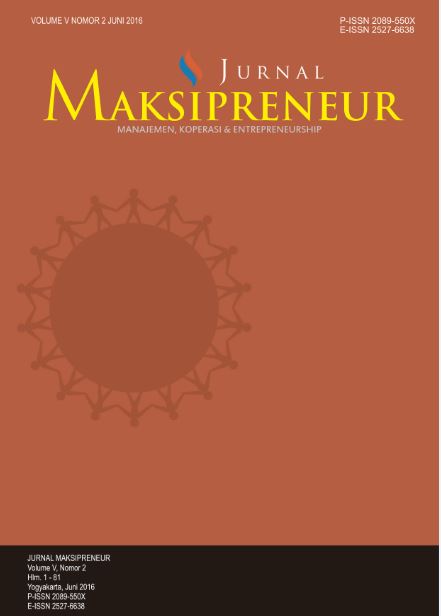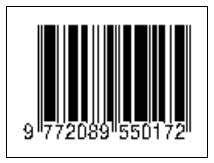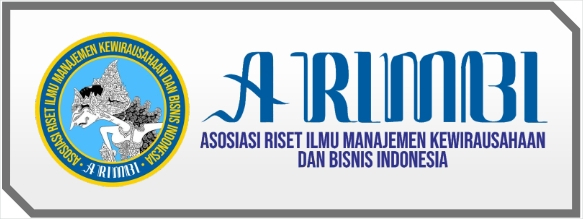Dampak Gender pada Pembelian Produk Perawatan Wajah di Negara Beriklim Tropis
DOI:
https://doi.org/10.30588/jmp.v12i2.1274Keywords:
Attitude, Gender, Perceived behavioral control, Subjective norm, Theory of planned behaviorAbstract
This study aims to investigate the effect of attitudes, subjective norms, and perceived behavioral control on the purchase intention of facial care products based on the theory of planned behavior. The moderating role of gender was also tested on the relationship between purchase intention and factors from the theory of planned behavior. In addition, this research was conducted in a country with a tropical and hot climate which has many cases of facial skin problems. Data collected from 320 respondents were tested against the research model using PLS analysis. The results showed that attitudes, subjective norms, and perceived behavioral control had a significant impact on the purchase intention of facial care products, and it was also found that these factors influenced women more than men on the purchase intention of facial care products. The findings of this study present important theoretical and practical implications for the buying behavior of facial care products.References
Ajzen, I. (1991). The Theory of Planned Behavior. Organizational Behavior and Human Decision Processes, 50(2), 179–211.
Armitage, C. J., & Conner, M. (1999). Distinguishing Perceptions of Control from Self-Efficacy: Predicting Consumption of a Low-Fat Diet Using the Theory of Planned Behavior. Journal of Applied Social Psychology, 29(1), 72–90. https://doi.org/10.1111/j.1559-1816.1999.tb01375.x.
Asteria, D., Suyanti, E., Utari, D., & Wisnu, D. (2014). Model of Environmental Communication with Gender Perspective in Resolving Environmental Conflict in Urban Area (Study on the Role of Women’s Activists in Sustainable Environmental Conflict Management). Procedia Environmental Sciences, 20, 553–562. https://doi.org/10.1016/j.proenv.2014.03.068.
Bakshi, S. (2013). Impact of Gender on Consumer Purchase. ABHINAV National Monthly Referred Journal of Research in Commerce & Management, 1(9), 1–8. https://doi.org/10.9790/487X-1908053336.
Bratt, C. (1999). Consumer's Environmental Behavior: Generalized, Sector-based, or Compensatory? Environment and Behavior, 31(1), 28–44. https://doi.org/10.1177/00139169921871985.
Chin, J., Jiang, B. C., Mufidah, I., Persada, S. F., & Noer, B. A. (2018). The Investigation of Consumers’ Behavior Intention in Using Green Skincare Products: A Pro-environmental Behavior Model Approach. Sustainability (Switzerland), 10(11). https://doi.org/10.3390/su10113922.
Chiu, C. L., Wang, Q., Ho, H. C., Zhang, J., & Zhao, F. (2019). Metrosexual Trend in Facial Care Products: Analysis of Factors that Influence Young Chinese Men Purchasing Intention. Journal of Global Fashion Marketing, 10(4), 377–397. https://doi.org/10.1080/20932685.2019.1639527.
Choi, H., Jang, J., & Kandampully, J. (2015). Application of the Extended VBN Theory to Understand Consumers’ Decisions about Green Hotels. International Journal of Hospitality Management, 51, 87–95. https://doi.org/10.1016/j.ijhm.2015.08.004.
Christine, K. Y. T., Kempa, S., & Vincēviča-Gaile, Z. (2020). Determinant Factors in Purchasing Korean Skin Care Products. SHS Web of Conferences, 76, 01021. https://doi.org/10.1051/shsconf/20207601021.
Davies, J., Foxall, G. R., & Pallister, J. (2002). Beyond the Intention–Behaviour Mythology. Marketing Theory, 2(1), 29–113. https://doi.org/10.1177/1470593102002001645.
Eagly, A. H., & Chaiken, S. (2007). The Advantages of an Inclusive Definition of Attitude. Social Cognition, 25(5), 582–605.
Eng, T. C., Ahmad, F. S., & Choong, Y. O. (2018). Conceptual Study on Malaysian Male Consumption Behaviour Towards Skin Care Products. International Journal of Innovation and Business Strategy, 9(1), 1–12.
Fishbein, M. A., & Ajzen, I. (1975). Belief, Attitude, Intention, and Behaviour: An Introduction to Theory and Research (Vol. 27). MA: Addison-Wesley.
Fornell, C., & Larcker, D. F. (1981). Structural Equation Models with Unobservable Variables and Measurement Error: Algebra and Statistics. Journal of Marketing Research, 18(3), 382–388.
Ha, N. T. (2020). The Impact of Perceived Risk on Consumers’ Online Shopping Intention: An Integration of TAM and TPB. Management Science Letters, 9(9), 2029–2036. https://doi.org/10.5267/j.msl.2020.2.009.
Hair, J. F., Anderson, R. E., Tatham, R. L., & Black, W. C. (1995). Multivariate Data Analysis with Readings. Englewood Cliffs, NJ: Prentice-Hal, Inc.
Han, H., & Sean, S. (2015). Customer Retention In the Medical Tourism Industry: Impact of Quality, Satisfaction, Trust, and Price Reasonableness. Tourism Management, 46, 20–29. https://doi.org/10.1016/j.tourman.2014.06.003.
Hsu, C.-L., Chang, C.-Y., & Yansritakul, C. (2017). Exploring Purchase Intention of Green Skincare Products Using the Theory of Planned Behavior: Testing the Moderating Effects of Country of Origin and Price Sensitivity. Journal of Retailing and Consumer Services, 34, 145–152. https://doi.org/10.1016/j.jretconser.2016.10.006.
Jan, M. T., Haque, A., Abdullah, K., Anis, Z., & Faisal-E-Alam. (2019). Elements of Advertisement and their Impact on Buying Behaviour: A Study of Skincare Products in Malaysia. Management Science Letters, 9(10), 1519–1528. https://doi.org/10.5267/j.msl.2019.5.033.
Joshi, Y., & Rahman, Z. (2015). Factors Affecting Green Purchase Behaviour and Future Research Directions. International Strategic Management Review, 3(1–2), 128–143. https://doi.org/10.1016/j.ism.2015.04.001.
Kaiser, F. G., & Gutscher, H. (2003). The Proposition of a General Version of the Theory of Planned Behavior: Predicting Ecological Behavior1. Journal of Applied Social Psychology, 33(3), 586–603. https://doi.org/10.1111/j.1559-1816.2003.tb01914.x.
Kidwell, B., & Jewell, R. D. (2003). An Examination of Perceived Behavioral Control: Internal and External Influences on Intention. Psychology and Marketing, 20(7), 625–642. https://doi.org/10.1002/mar.10089.
Kim, S., & Seock, Y. (2009). Impacts of Health and Environmental Consciousness on Young Female Consumers’ Attitude towards and Purchase of Natural Beauty Products. International Journal of Consumer Studies, 33(6), 627–638. https://doi.org/10.1111/j.1470-6431.2009.00817.x.
Kim, Y. J., Njite, D., & Hancer, M. (2013). Anticipated Emotion in Consumers’ Intentions to Select Eco-friendly Restaurants: Augmenting the Theory of Planned Behavior. International Journal of Hospitality Management, 34, 255–262. https://doi.org/10.1016/j.ijhm.2013.04.004.
Kumampung, D. R. (2019). Jerawat Jadi Keluhan 2 Juta Orang Indonesia, Apa Solusinya? Kompas.com, December 12. Accessed at: https://lifestyle.kompas.com/read/2019/12/12/204658820/jerawat-jadi-keluhan-2-juta-orang-indonesia-apa-solusinya?page=all.
Lakshmi, V. V., Niharika, D. A., & G.Lahari. (2017). Impact of Gender on Consumer Purchasing Behaviour. Journal of Business and Management (IOSR-JBM), 19(8), 33–36. https://doi.org/10.9790/487X-1908053336.
Laksono, D., & Purwanegara, M. S. (2014). Male Consumers’ Behavior Towards “for Men” Facial Wash. Journal of Business and Management, 3(4), 468–474.
Le, T. A., Mai, N. Q. T., Van Vo, N., Tram, N. T. H., & Le Nguyen, N. (2020). Factors Affecting the Choice of Buying Korean Cosmetics. Management Science Letters, 10(13), 3097–3106. https://doi.org/10.5267/j.msl.2020.5.013.
Lee, J. E., Goh, M. L., & Mohd Noor, M. N. Bin. (2019). Understanding the Purchase Intention of University Students towards Skincare Products. PSU Research Review, 3(3), 161–178. https://doi.org/10.1108/prr-11-2018-0031.
Lee, K. (2009). Gender Differences in Hong Kong Adolescent Consumers’ Green Purchasing Behavior. Journal of Consumer Marketing, 26(2), 87–96. https://doi.org/10.1108/07363760910940456.
Likert, R. (1934). A Simple and Reliable Method of Scoring the Turnstone Attitude Scales. Journal of Social Psychology, 5, 228.
Nikmah, K., & Liana, C. (2016). Perubahan Konsep Kecantikan Menurut Iklan Kosmetik di Majalah Femina Tahun 1977-1995. Avatara, 4(1), 167–180.
Nunnally, J. C. (1978). Psychometric Theory (2nd ed.). New York, USA: McGraw-Hill.
Sanny, L., Arina, A. N., Maulidya, R. T., & Pertiwi, R. P. (2020). Purchase Intention on Indonesia Male’s Skin Care by Social Media Marketing Effect towards Brand Image and Brand Trust. Management Science Letters, 10, 2139–2146. https://doi.org/10.5267/j.msl.2020.3.023.
Sreen, N., Purbey, S., & Sadarangani, P. (2018). Impact of Culture, Behavior, and Gender on Green Purchase Intention. Journal of Retailing and Consumer Services, 41(July 2017), 177–189. https://doi.org/10.1016/j.jretconser.2017.12.002.
Statista.com (2019). Value of the cosmetics market worldwide from 2018 to 2025. Accessed at: https://www.statista.com/statistics/585522/global-value-cosmetics-market/#:~:text=This%20statistic%20shows%20the%20value,billion%20U.S.%20dollars%20by%202025.
Statista.com (2020). Face - Indonesia | Statista Market Forecast. Accessed at: https://www.statista.com/outlook/cmo/beauty-personal-care/cosmetics/face/indonesia.
Tarigan, M. (2017). 95 Persen Pria Peduli Penampilan Kulit Mereka - Gaya Tempo.co. Tempo.Co, December 7. https://gaya.tempo.co/read/1040154/95-persen-pria-peduli-penampilan-kulit-mereka.
Teoh, K. C., & Md Harizan, S. H. (2017). Factors Influencing Consumers’ Purchase Intention of Cosmetic Products in Malaysia. International Journal of Business, 3(1), 1–15.
Ulfat, S., Muzaffar, A., & Shoaib, M. (2014). To Examine the Application and Practicality of Aakers’ Brand Equity Model in Relation with Recurrent Purchases Decision for Imported Beauty Care Products (A Study of Female Customers’ of Pakistan). European Journal of Business and Management, 6(11), 120–134.
Yadav, R., & Pathak, G. S. (2016). Young Consumers’ Intention towards Buying Green Products in a Developing Nation: Extending the Theory of Planned Behavior. Journal of Cleaner Production, 135, 732–739. https://doi.org/10.1016/j.jclepro.2016.06.120.
Downloads
Additional Files
Published
How to Cite
Issue
Section
License
Authors who publish with Jurnal Maksipreneur agree to the following terms:
Authors retain copyright and grant the Jurnal Maksipreneur right of first publication with the work simultaneously licensed under a Creative Commons Attribution 4.0 International License that allows others to share (copy and redistribute the material in any medium or format) and adapt (remix, transform, and build upon the material) the work for any purpose, even commercially with an acknowledgment of the work's authorship and initial publication in Jurnal Maksipreneur.
Authors are able to enter into separate, additional contractual arrangements for the non-exclusive distribution of the journal's published version of the work (e.g., post it to an institutional repository or publish it in a book), with an acknowledgment of its initial publication in Jurnal Maksipreneur. Authors are permitted and encouraged to post their work online (e.g., in institutional repositories or on their website) prior to and during the submission process, as it can lead to productive exchanges, as well as earlier and greater citation of published work (See The Effect of Open Access).























